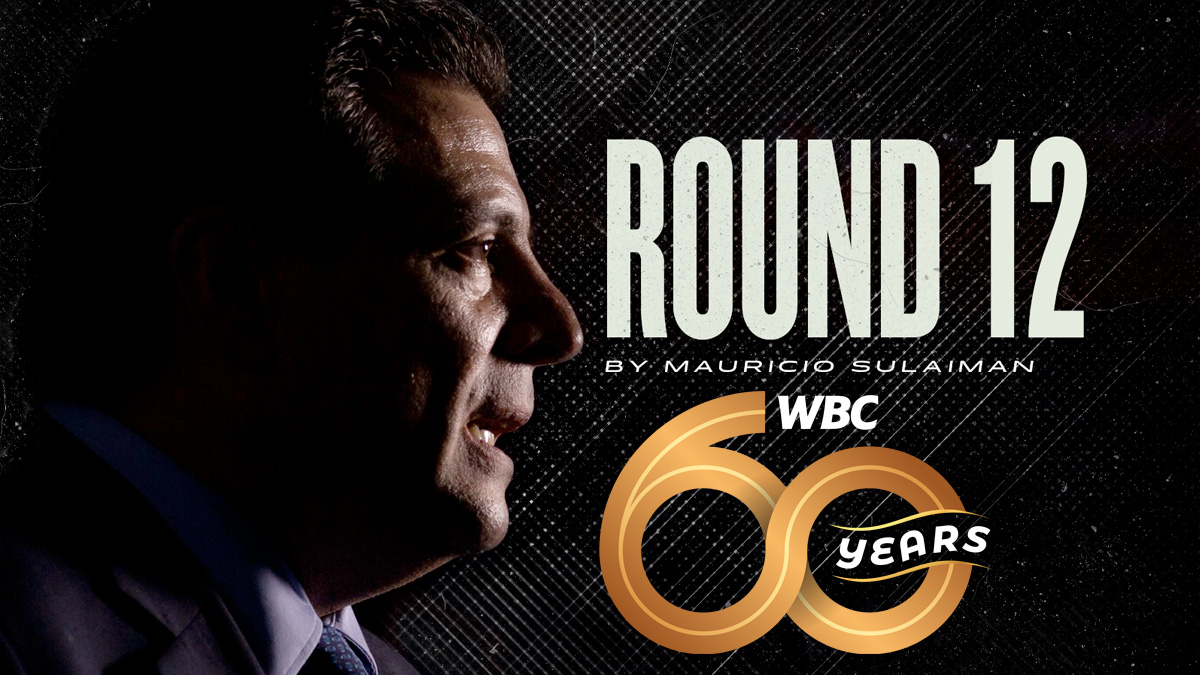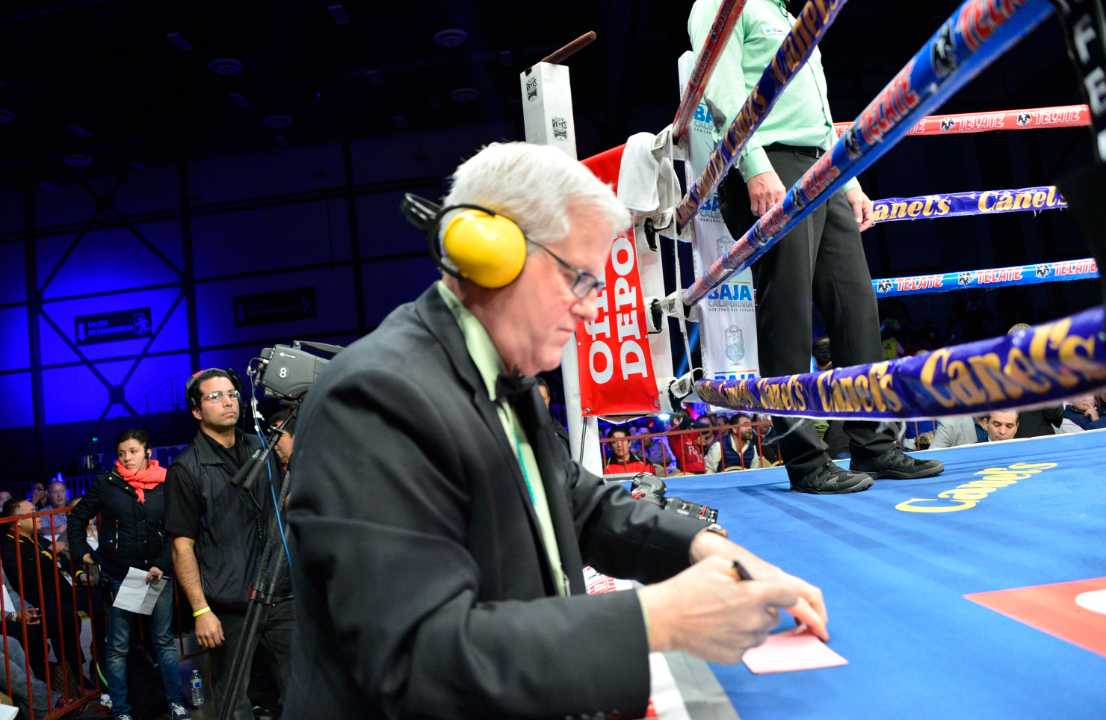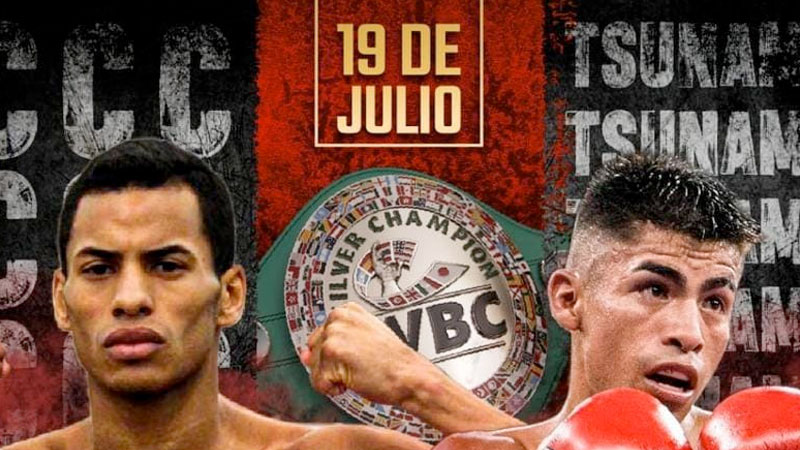
Round 12: Boxing in Constant Flux
By Mauricio Sulaimán – Son of José Sulaimán – WBC President
With great joy and enthusiasm I see that, finally, a long awaited and much needed necessary process of improvement and change is underway. The first step has been taken by the leaders in the ABC.
Boxing, unfortunately, is a sport characterized by resistance to change; traditionalists like everything to remain intact and stubbornly, to keep everything unchanged and untouched. It is extremely difficult to make changes to the rules, adapt criteria to the present day, and take advantage of modern technology, something that simply wasn’t available decades ago.
The Association of Boxing Commissions of the United States has announced a first step, something simple, but of great importance. A guideline for boxing judges was published last week in which it is mandatory to score the round 10-8 whenever there is a knockdown.
This criteria has always existed, but the judge has had the discretion to score 10-9, and we even recently we saw a scandalous 10-10, in a round in which a fighter visited the canvas. This new provision makes and marks 10-8 as mandatory.
We have to understand that a knockdown is a seminal moment. It is like a home run, a goal, a three-point basket; It must be given the value it deserves.
The World Boxing Council applauds this action by the ABC, and we will carry forward that determination worldwide.
It is urgent to take steps forward, to address everything related to judges and referees.
The first thing is to clearly define the scoring criteria for the judges. That involves being clear about what is being scored, to put it in an understandable plain language. If it is not written correctly, if it is left open to a broad interpretation, then the criteria to be followed will not be crystal clear. It’s like languages, someone understands something, and others interpret differently.
The second is to educate, train and certify, seeking absolute uniformity. The third is to have a system of evaluation and grading of each one of the performances of the officials, having feedback after each performance, and thus achieve continuous and sustained improvement. Officials must also be held accountable for their actions and mistakes.
Without fear of being wrong, the judges, in their absolute majority, are honorable people, in love with boxing and who seek to do the very best possible job possible.
Boxing is an appreciation sport. Obviously, the judge scores what he/she sees, but there are also many factors that must be considered, in order to fully understand what happens.
The three judges are sitting on different sides of the ring. On many occasions they have people and objects that can get in the way, so they do not always have the best angle to see the action and there is a great influence from everything that happens around them. For example, the judge who is sitting, next to the television commentators, listening to the narration, even though he is concentrating, he’s likely to take in what they say and this can have an influence. Also, in many countries there are people close to the judges shouting and applauding everything the local boxer does, so the proximity of cheering and frenetic atmosphere well up in favor of one of the boxers.
The current system was instituted 45 years ago, based upon 10 points. The winner of the round will receive 10 points, and his opponent 10, 9, 8, 7 and a minimum of 6. One thing to consider is that 96 percent of rounds are scored 10-9. The judges fear scoring a round draw 10-10; there are even boxing commissions that prohibit even rounds. That’s where a big perception problem comes in. Let’s say Boxer A wins the first round, where there was very little action, and perhaps, he landed a jab or a couple of light punches and is a 10-9 winner. The second round comes, and boxer B connects strongly, and clearly wins the round, but the score is also 10-9… What did the public see? That boxer B is winning the fight, but in reality the score doesn’t reflect that
We will be promoting the acceptance of scoring rounds 10-10, when it is strictly a very close round, but also 10-8, when dominance and forcefulness is absolute, and the only thing missing is for the rival being knocked down.
This past weekend we viewed referees in the eye of the storm. In Thailand there was a great fight. The WBC final eliminator to determine the mandatory challenger for the new bantamweight champion, Alejandro Peque Santiago. Thai Nawaphon Kaikanha improved from a weak start, and at the end of the tenth round he was leading on the scorecards, by the way Open Scoring was a great a success Astrobiano was ahead 39-37 twice and 40-36 at the end of four and the fight got close by the 8th 76-76 twice and 77-75 for astrobiano; In the 11th round Philipino Vincent Astrolabio, connected strongly, sending Nawaphon face first to the canvas; upon getting up he received six strong blows, without response, and the Japanese referee Yuji Fukuchi stopped the fight.
The Thai press and the same promoter are vigorously protesting. For the WBC the fight was perfectly stopped. He was clearly hurt, and it will always be preferable to stop the fight, one punch before instead of one blow too late, which would risk the fighter suffering irreparable damage.
In Poland, Oleksandr Usyk, WBO, IBF and WBA heavyweight world champion, defended his titles against British Daniel Dubois.
In the fifth round, Dubois landed hard on Usyk, who went to the canvas, with a blow that landed right on the belt of the shorts, which is obviously considered low blow. Unfortunately only the WBC uses the instant replay rule, and that was not the case in this fight.
Usyk took five minutes to recover. All Saturday and Sunday it was discussed on social networks as if it had been a legal blow, and it should have been a knockout. There was controversy, of course the speed of the action live , but the video and photos clearly show that the punch landed on the shorts.
In Oklahoma, in the WBC silver championship fight, a great battle was expected between the African Efe Ajagba and the Kazakh Zhan Kossobutskiy. The fight turned to dirty and full of fouls, mostly low blows and resulted in a disqualification loss for undefeated Kossubutski . In the main event Jared Anderson also fought and plenty of low blows happened in such fight. Plenty of video actions to review, analyze and act on for the improvement of our sport.
DID YOU KNOW…?
The regulation indicates that the navel is the limit that marks the legal zone; blows under it are illegal. It is the referee duty to signal before the beggining of the fight where will the legal zone will be and who must decide during the actions of the fight.
TODAY´s ANECDOTE
On That glorious boxing event back in February 20, 1993, when Julio César Chávez filled the Azteca Stadium, a young prospect from Puerto Rico fought on the undercard: Félix Tito Trinidad.
Trinidad hit his rival with a low blow, not very strong, but in an illegal zone, although nothing serious, The opponent fell to the ground, and put on a tremendous show, obviously looking to win by disqualification. Time passed and he didn’t get up… Suddenly, I see how my dad approaches the fighter and says some things to him; he immediately got up and declared himself ready to continue… “Dad, what did you tell him?” I simply told him that the rule is very clear, you can’t win by low blow, you have 5 minutes to recover and if you don’t continue, you will lose by abandonment, and whoever loses like that, doesn’t get paid “… He miraculously recovered and continued the fight.
I welcome your feedback at contact@wbcboxing.com
![]()
Related posts
test












